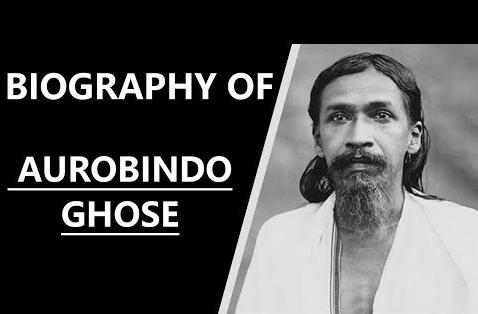Table of Contents
EARLY LIFE
- Aurobindo Ghose was born in Calcutta , Bengal Presidency, India on 15 August 1872 in a village of Konnagar.
- His father, Krishna Dhun Ghose, was then Assistant Surgeon of Rangpur in Bengal, and a former member of the Brahmo Samaj religious reform movement. His mother was Swarnalata Devi.
- Aurobindo had two elder siblings, Benoybhusan and Manmohan, a younger sister, Sarojini, and a younger brother, Barindrakumar.
EARLY LIFE
- He and his two elder siblings were sent to the Englishspeaking Loreto House boarding school in Darjeeling.
- Entire family moved to England in 1879.The three brothers were placed in the care of the Reverend W. H. Drewett in Manchester.
- In 1884 he was enrolled in St Paul’s. Sri Aurobindo was an excellent student and won a scholarship to read classics at King’s College Cambridge.
- It was at university that the young Aurobindo became increasingly interested in the fledgeling Indian independence movement
THE RISING
- He passed the written ICS examination after a few months, being ranked 11th out of 250 competitors. He spent the next two years at King’s College.Aurobindo had no interest in the ICS.
- He left England for India, arriving there in February 1893. In Baroda, Aurobindo joined the state service in 1893, working first in the Survey and Settlements department, later moving to the Department of Revenue and then to the Secretariat.
- He linked up with resistance groups in Bengal and Madhya Pradesh , while travelling to these states. He established contact with Lokmanya Tilak and Sister Nivedita
REBEL
- He formally moved to Calcutta in 1906 after the announcement of the Partition of Bengal. In his public activities he favoured non-co-operation and passive resistance; in private he took up secret revolutionary activity as a preparation for open revolt, in case that the passive revolt failed.
- He helped establish a series of youth clubs, including the Anushilan Samiti of Calcutta in 1902. He was arrested again in May 1908 in connection with the Alipore Bomb Case.
SPIRITUALITY
- Once out of the prison he started two new publications, Karmayogin in English and Dharma in Bengali. He also delivered the Uttarpara Speech hinting at the transformation of his focus to spiritual matters.
- In April 1910 Aurobindo moved to Pondicherry, where Britain’s secret police monitored his activities. In 1910 Aurobindo withdrew himself from all political activities and went into hiding at Chandannagar in the house of Motilal Roy, while the British were trying to prosecute him
SPIRITUALITY
- In Pondicherry, Sri Aurobindo dedicated himself to his spiritual and philosophical pursuits. In 1914, after four years of secluded yoga, he started a monthly philosophical magazine called Arya.
- At the beginning of his stay at Pondicherry, there were few followers, but with time their numbers grew, resulting in the formation of the Sri Aurobindo Ashram in 1926.From 1926 he started to sign himself as Sri Aurobindo.
- Sri Aurobindo died on 5 December 1950. Around 60,000 people attended to see his body resting peacefully.
PHILOSOPHY
- His approach to philosophy of education is mainly value based and he wanted to look at education from an integral point of view.
- Unless we know about human nature, it is difficult to evolve a proper educational philosophy. So Aurobondo tried to analyze human nature.
- The soul according to Aurobido is double. There is the surface desire soul and the sublimina lPsychic entity. This Psychic entity is the real soul or caita purusha. This is the Jivatman, the self, the universal man
PHILOSOPHY
- According to Aurobindo the soul is enclosed in five sheathes-they are physical, vital, mental, psychical and spiritual all the five sheathes have two aspects, the surface and the inner.
- The instrument of education, according to Aurobindois the mind or Antahkarana, consists of four layers:-
- Citta
- Manas
- Buddha
- Supra normal faculties
Biography Free PDF






















 WhatsApp
WhatsApp